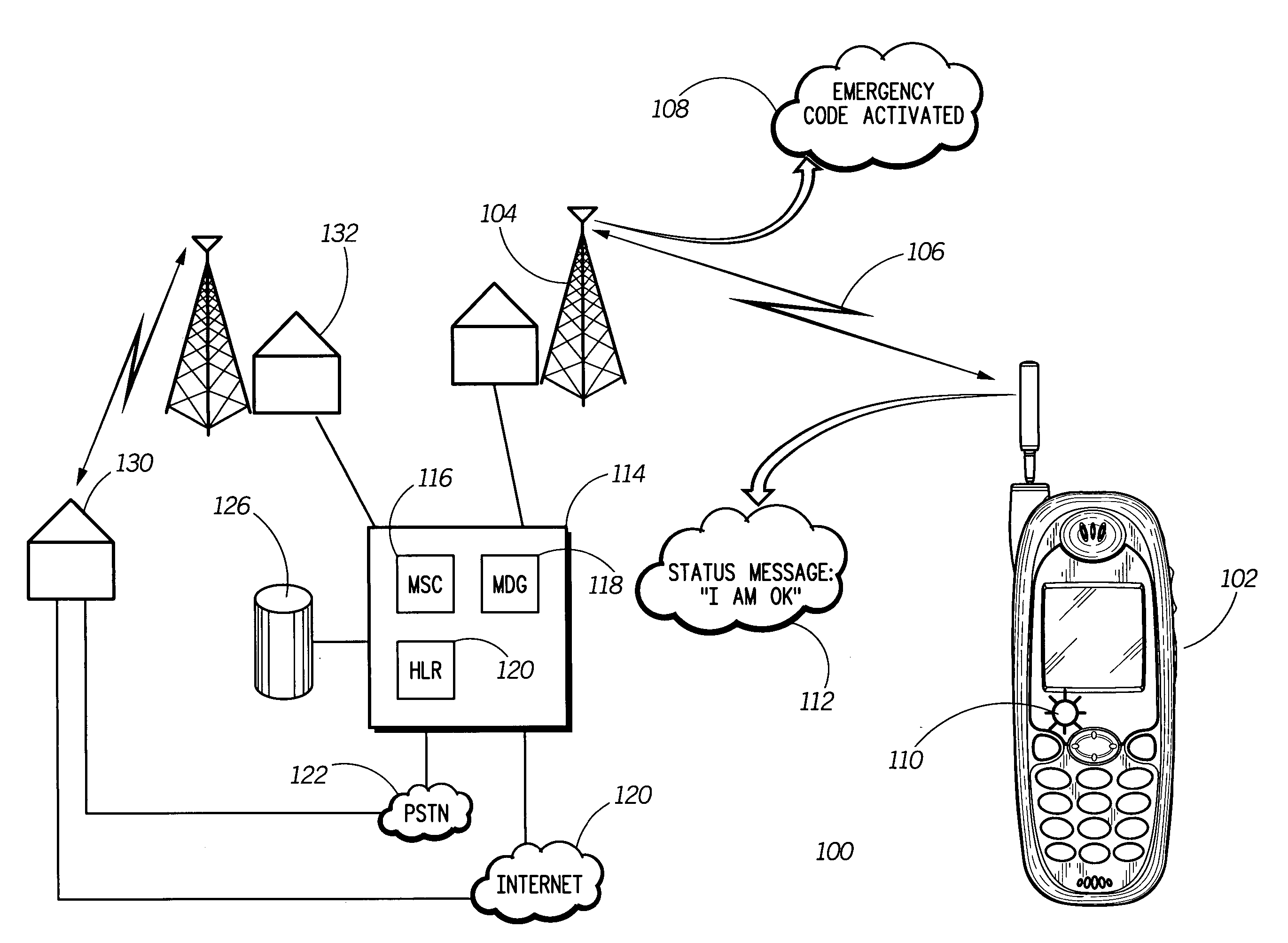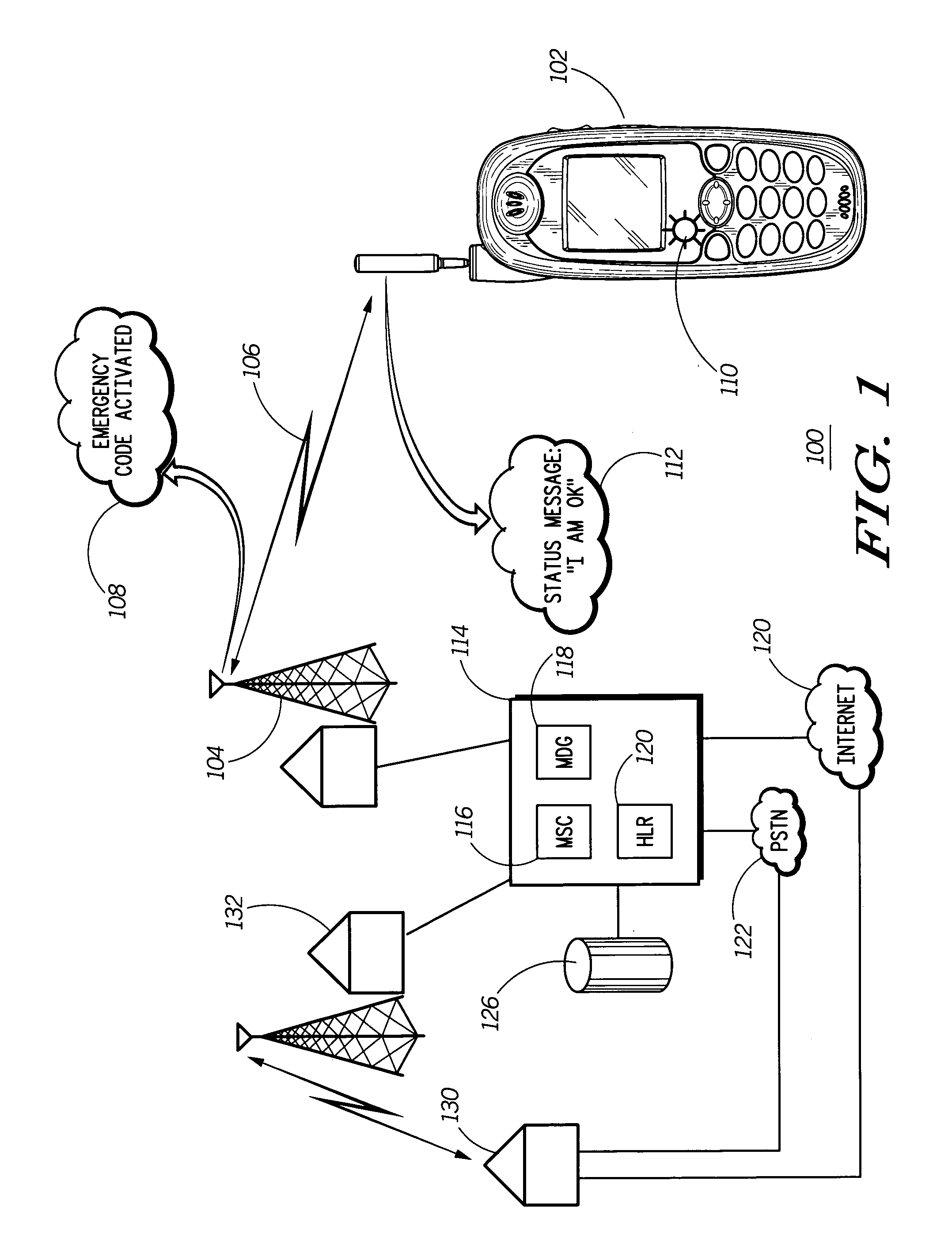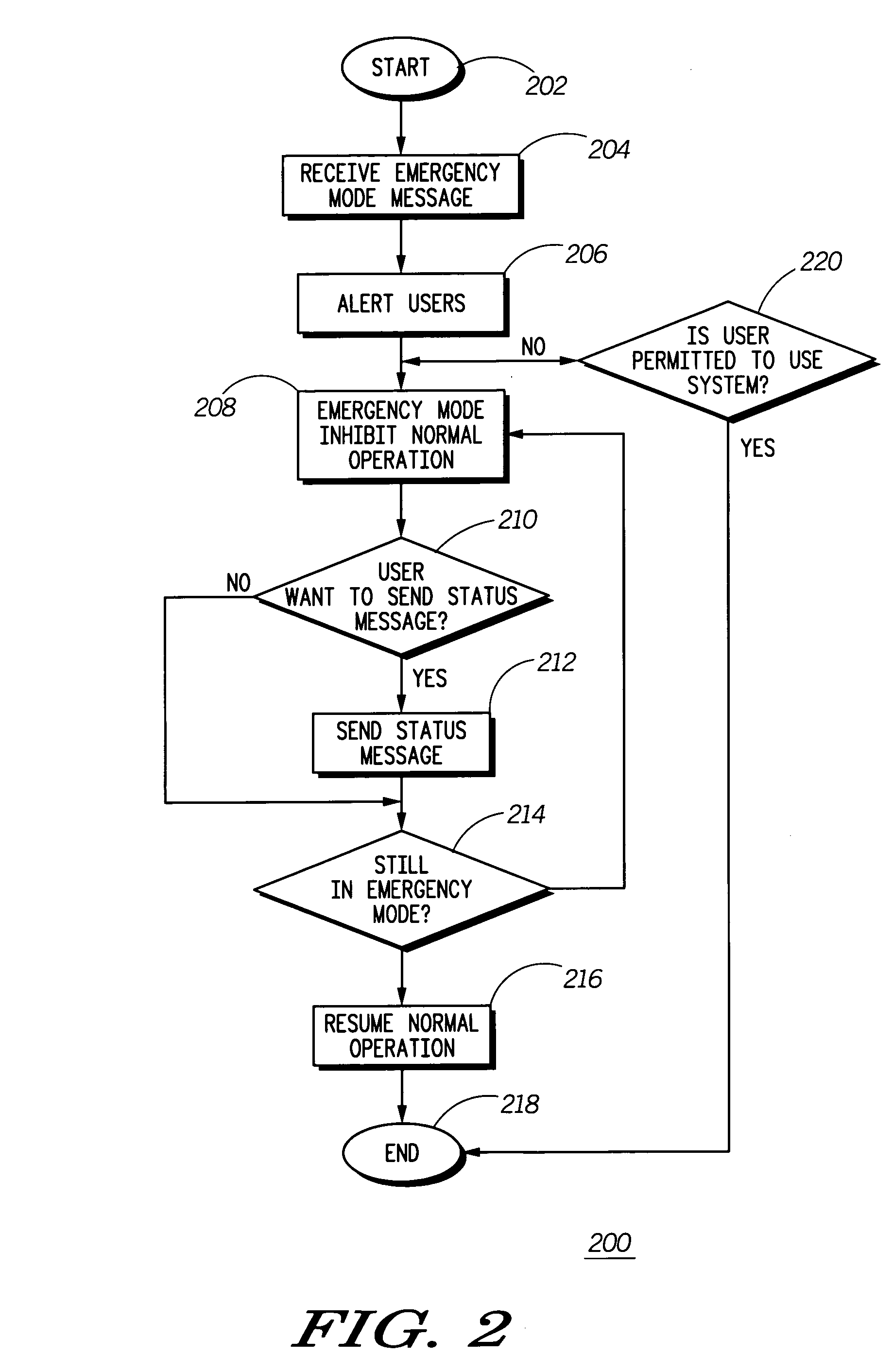Method of operating a mobile communication device and mobile communication system during an emergency situation
a mobile communication system and emergency situation technology, applied in the field of mobile wireless communications, can solve the problems of many subscribers being unable to use the communication system in emergencies, many subscribers unable to acquire communication service to let other, and occasionally appearing emergency situations in heavily populated areas
- Summary
- Abstract
- Description
- Claims
- Application Information
AI Technical Summary
Benefits of technology
Problems solved by technology
Method used
Image
Examples
Embodiment Construction
[0009] While the specification concludes with claims defining the features of the invention that are regarded as novel, it is believed that the invention will be better understood from a consideration of the following description in conjunction with the drawing figures, in which like reference numerals are carried forward.
[0010] The invention solves the problem of overloading mobile communication serving areas during emergencies by alerting users of the emergency and inhibiting regular mobile communication operation. Instead, users in affected areas are only allowed to transmit short status messages. By inhibiting regular operation and only permitting short message to be sent, more subscribers will be able to at least notify others that they are safe or otherwise not seriously affected by the event giving rise to the emergency. The invention also allows certain subscribers, such as emergency workers, to have regular operation in the affected locations while regular subscribers are ...
PUM
 Login to View More
Login to View More Abstract
Description
Claims
Application Information
 Login to View More
Login to View More - R&D
- Intellectual Property
- Life Sciences
- Materials
- Tech Scout
- Unparalleled Data Quality
- Higher Quality Content
- 60% Fewer Hallucinations
Browse by: Latest US Patents, China's latest patents, Technical Efficacy Thesaurus, Application Domain, Technology Topic, Popular Technical Reports.
© 2025 PatSnap. All rights reserved.Legal|Privacy policy|Modern Slavery Act Transparency Statement|Sitemap|About US| Contact US: help@patsnap.com



